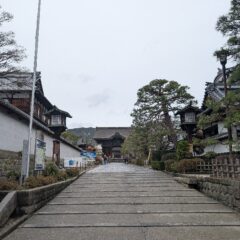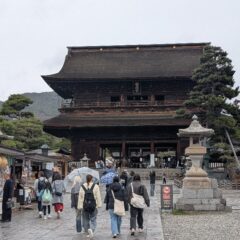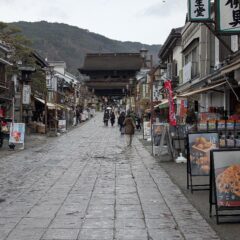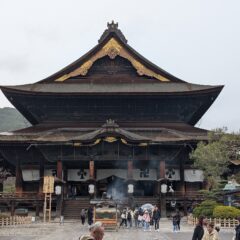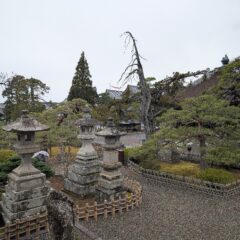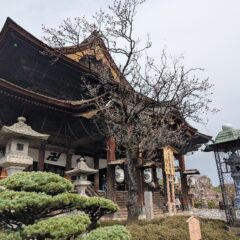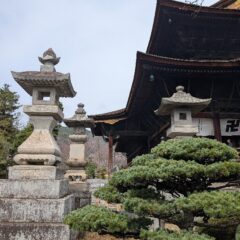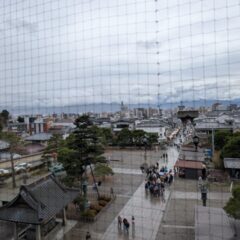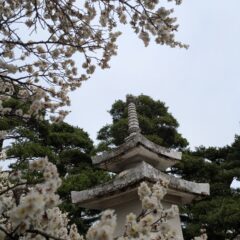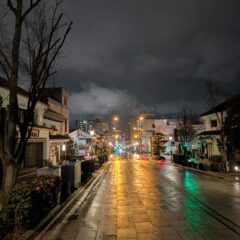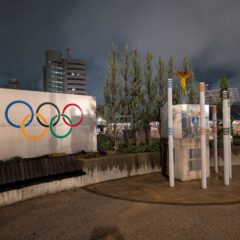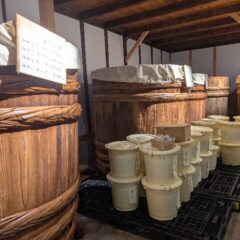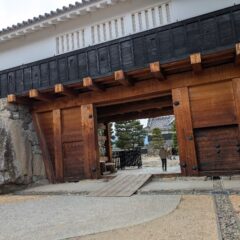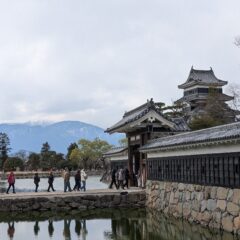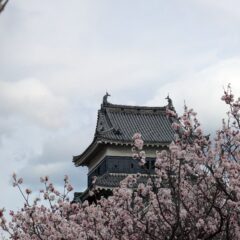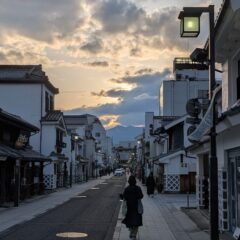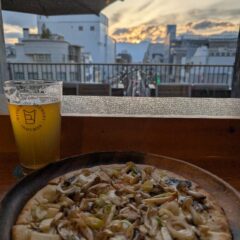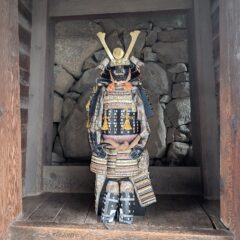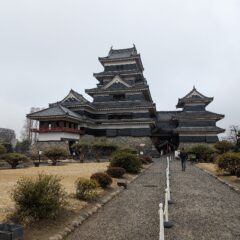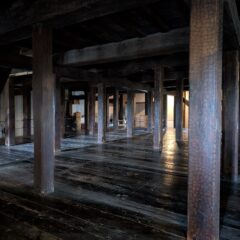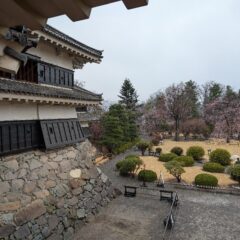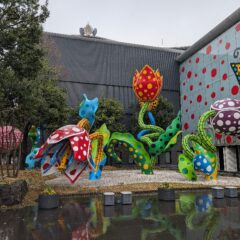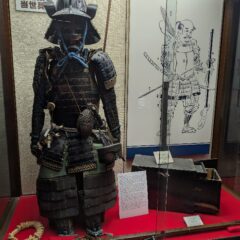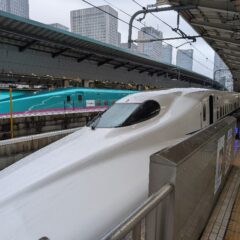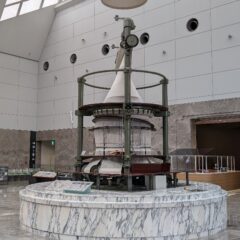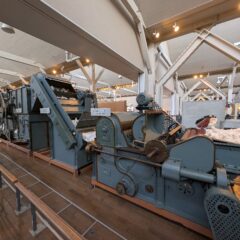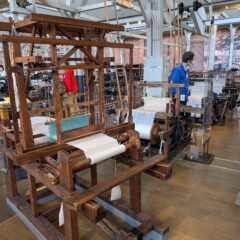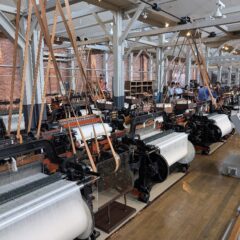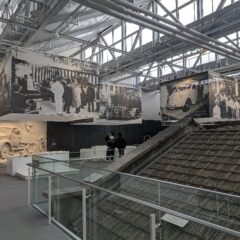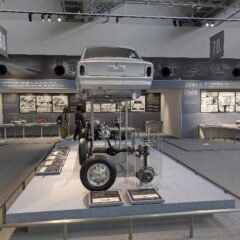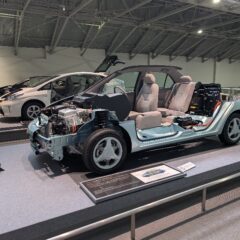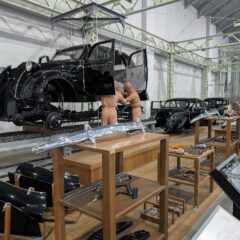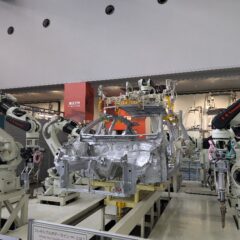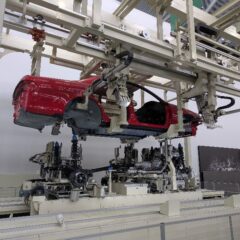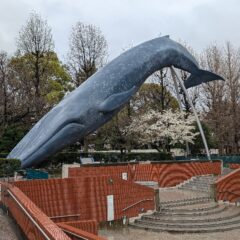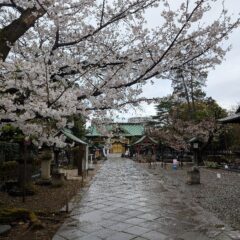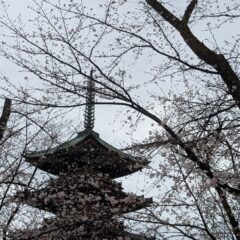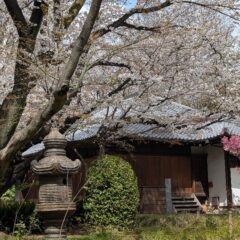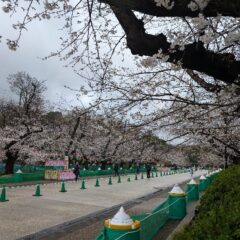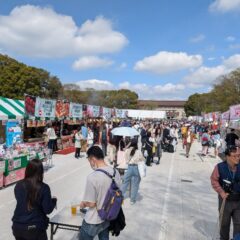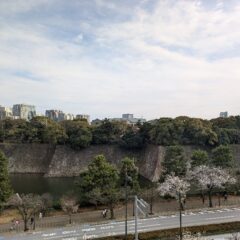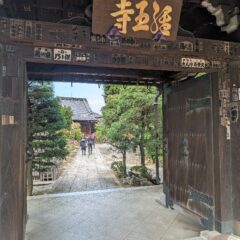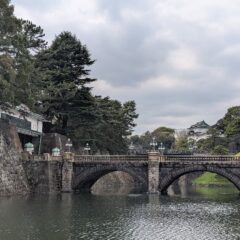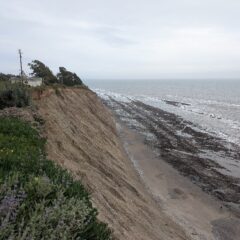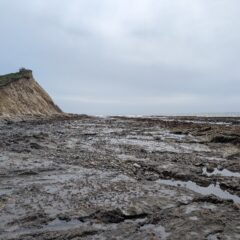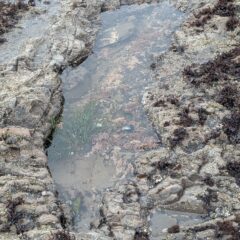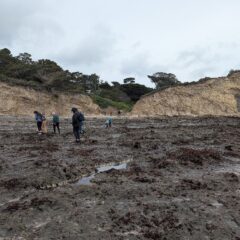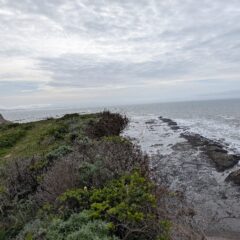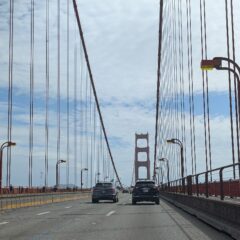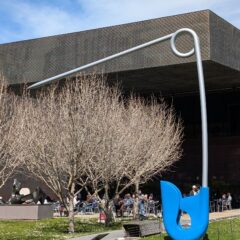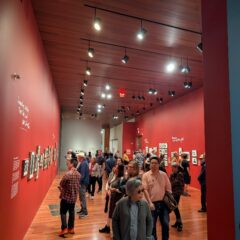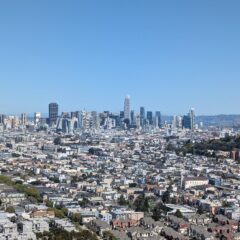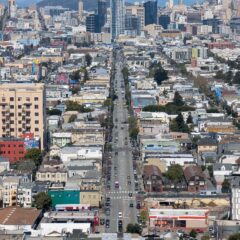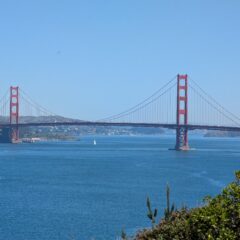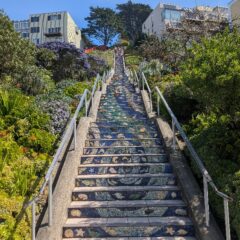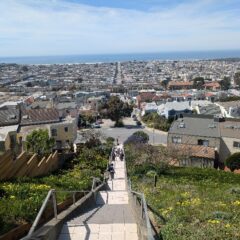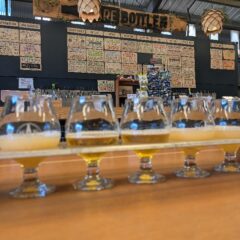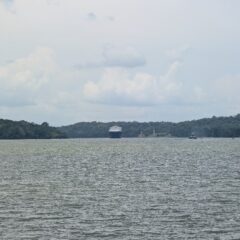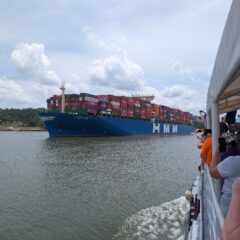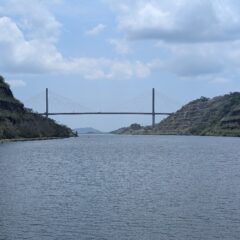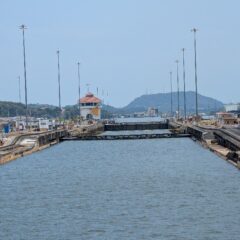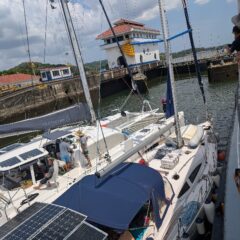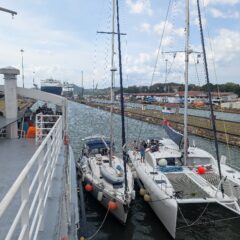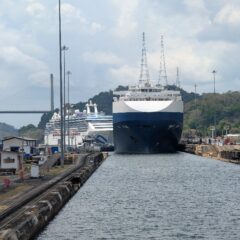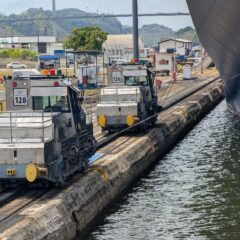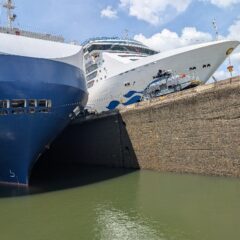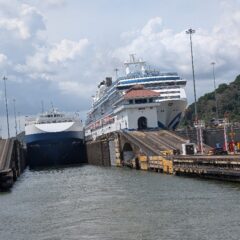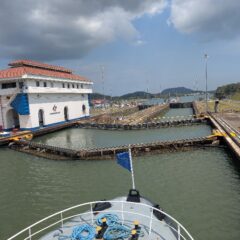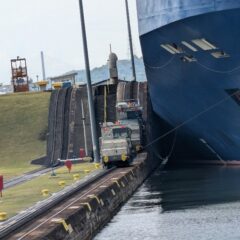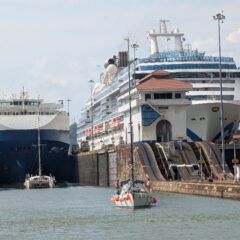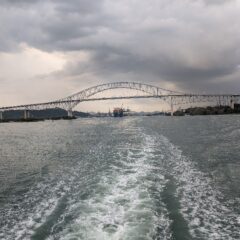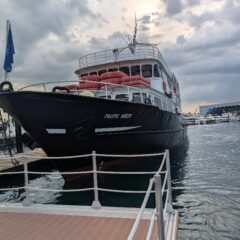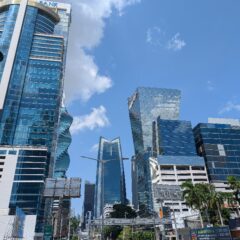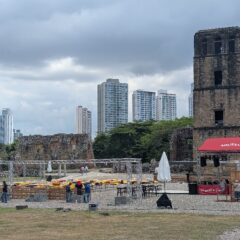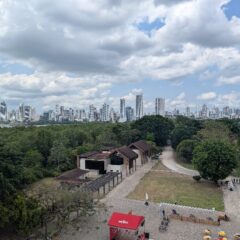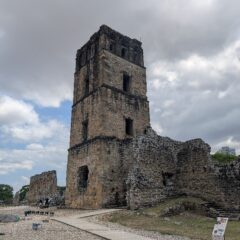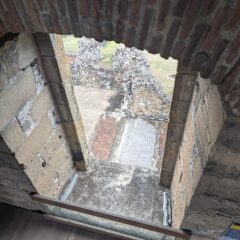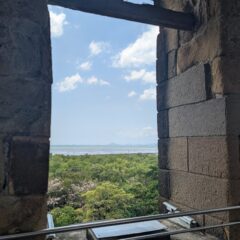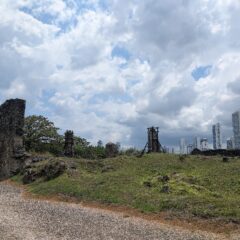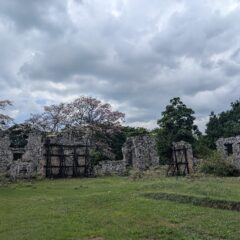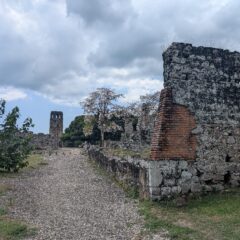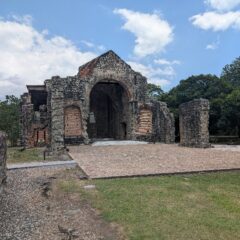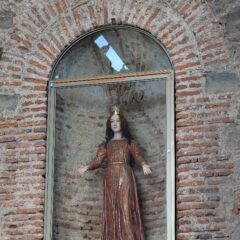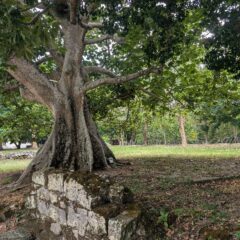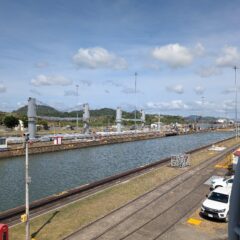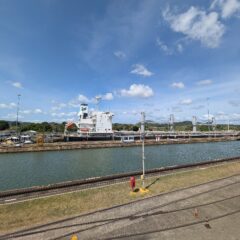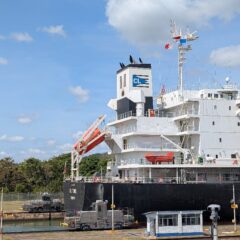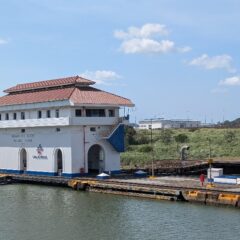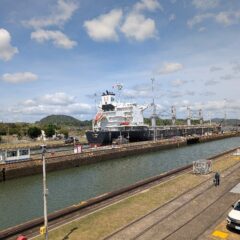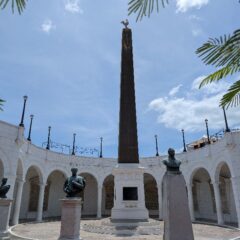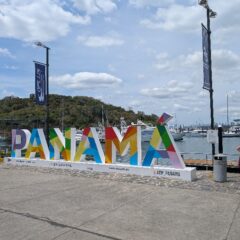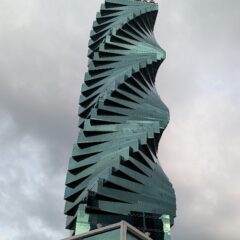This morning I took the local train over to Nagano – the host city of the 1998 olympic winter games. After arrival at my hotel I made it straight to town’s main attraction – Zenko-ji Buddhist Temple. I did the full tour here, incl. the crypt in the dark “to experience the world after death and touching the key to paradise” (well, that’s what the instructions said). Otherwise it was back to city exploration. The evening I spent very local … with dinner in a small, hidden izakaya that probably only sees the occasional tourist …very local with an older clientele – yet friendly and good food, good interaction (despite the language gap)and certainly an experience. From here I made it to a craft beer brewery – another local place but one catering for a younger crowd … good beer and good conversations (again bridging the language gap) – all in all a great evening.
Author Archives: Björn
On to Matsumoto – for a Castle and “crazy” Art
It was time to move on … next destination being Matsumoto – a mere two hours by train (limited express) away. My motivation for coming here was – of course – Matsumoto’s castle – but, also the city’s art museum showcasing the work of Matsumoto-born Yayoi Kusama. I had come across her work some years back, so was glad to see more in her birth town.
After a mid-day arrival on Monday I did some quick exploration of the city center to then move on to a local miso brewery for a tour and to try the product – the best miso ever … sooo umami … and miso ice cream is a real winner. From here it was to the castle grounds and the local history museum – before trying another local brew and a fusion of Japan and Italy – miso pizza (essentially replacing the tomato sauce by miso) … a great combo.
My second day in town was spent with the real sightseeing … I had an early start for the castle, essentially beating the queues (well, I started it 😉 ), to then head on for the art museum (no disappointment here … my favorite being the ladder to heaven – no photography here so, you’ll just have to google). It was late morning by now and with all other museums of interest for me closed (who closes museums on Tuesday?) and rain pouring down, I made my way to the local mall for some tea and a tour (just to realize how Japanese malls are actually very interesting – sometimes a mall is more than a mall). After lunch (cold soba with wasabi greens), nothing else to do and feeling cold, I made my way to the local super sento for a bit of relaxation and heat.
Coming back to the hotel, I used my cool-down time for laundry. Dinner was very local – in a small second-floor izakaya and local mountain cuisine, accompanied by local sake – super-oishy!
Castle Day – Inuyama and Gifu
Gallery
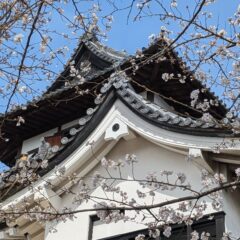
This gallery contains 24 photos.
I slept slightly better this night – though still had an early start, to catch an early non-JR train to Inuyama (~30 minutes on local express train, ~20km). I made it there before 09:00, when everything, including the “historic” town … Continue reading
Transportation Day – on to Nagoya
I had another early morning (thanks to – once more – jetlag) and another lengthy breakfast (to kill some time and wait out the rain). Eventually I headed out for Tokyo main station to catch the Shinkansen Nozomi Super-Express to Nagoya and got there around midday.
After leaving my stuff in the hotel, I had a walk through town, heading for Noritake Gardens … the place of a former porcelain factory – now a nice park with shops and an attached mall. From here it was on to my main destination in Nagoya – the impressive Toyota Commerative Museum of Industry and Technology. This museum tells the story of the Toyata company – from the early days building looms and other related machinery and the innovation going into it (all with working machines available and constant demonstrations) … to the air-driven looms of today (and – yes, you can still buy Toyota looms). From here it was over to the car business – how Toyoda was motivated to invest into this new line of business and then the development from the early days in the 1930s until today, from initial struggles to becoming a world brand. Advances in both production methods and product development were showcased – again with plenty of working machinery and demonstrations. There was also an introductory showcase on the Toyota Production System – essentially the basis of the global kaizen movement. In short this was easily the best industrial museum I have ever been to.
I made the walk back into town for a bit of dinner and an introduction into the Nagoya craft beer scene – before it was time to head back to the hotel for some deserved rest.
Big in Japan – back to Tokyo
From San Francisco it was on to Asia – a ten-hour flight got me into Narita on Thursday, from here I made it to Akihabara for the first true Japanese experience: two nights in a capsule hotel. I had decided for a more traditional place with an artificial onsen (public hot spring bath). I was impressed, this place was very well organized, everything is provided (from house-wear, toiletries to towels) – and considering the other ~35 beds on my level, it was fairly relaxed and quiet. I’d definetely do this again – it made a great experience and was much better than any hostel, I have been at so far.
I had an early start on Friday … jetlag got me up around 05:00 – I kind of dozed on for another 45 minutes, before heading for the capsule hotel’s sento (public bath) and got ready for the day. After a long breakfast I made my way up to Ueno Park … with cherry blossoms everywhere and a cherry blossom festival going on as well (not at 09:00 in the morning though). I spent some time in Japan’s National Museum, before having an early lunch at the festival. The afternoon I spent in the area around the Imperial Palace, closing with a visit at the National Museum of Modern Art. In the evening I met with a former colleague from Tokyo – we ended up in a traditional izakaya restaurant for some great food, beer and sake – before continuing to a downstairs karaoke bar for more drinks and proof that I cannot sing 😉
Around the Pacific … and back to the Bay
On Saturday we made a trip up to Marin Country and Agate Beach at Bolinas to meet a meetup group for a bit of tide pooling (with plenty of mussels, snails, algae and anemones to look at – plus the occasional hermit crab 🦀) and a short hike for great coastal views. From here it was back to town for a museum Sunday around the Golden Gate Park – incl. the Paul McCartney photo exhibition at De Young Museum.
Monday and Tuesday were easy days … essentially preparing for the next part of the trip (laundry, re-packing etc.) – followed by a walk to Bernal Heights for some great city views. More views were coming up on Tuesday during a tour of some of the more arty stairs around town.
Overall another great couple of days in and around San Francisco – just without the wine and no cioppino … thanks for a great time – and until next time.
San Francisco Discovery
Gallery
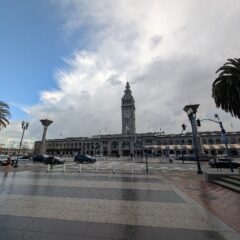
This gallery contains 20 photos.
From Panama my trip continued, now heading back to the US and up to San Francisco – to see my friend Lisa and spend some time in the city at the bay. This time the focus was on the city … Continue reading
A day on the Canal
Today was the big day. I made it over to Isla Flamenco in the morning for a bus trip North to Gamboa at the Southern end of the Gatun Lake. Here I – along with another ~150 people boarded the Pacific Queen for the journey back to the Pacific. We were to be in the first group of the day heading towards the Pacific, going through the locks together with sail boat, a catamaran and a huge Roll-on/ Roll-off car freighter.
From Gamboa it was South towards the Culebra Cut (the tightest part of the Canal, strictly only one direction), then underneath the Puente Centenario and on to the Pedro Miguel Locks for our first lock experience … with the Pacific Queen going in first, followed by the sail ship, which was fastened and secured to our ship; the catamaran was then was in turn linked to the sail boat. The big show followed with the car carrier being pulled in by electric locomotives. Once all was in place the lock gates were closed and we started to drop the ~10m to the level of the Miraflores Lake. Eventually the gates at front opened, the small ships got detached and we were leaving the locks making our way to through the lake and on to the first of two lock chambers of the Miraflores Locks.
We were lucky to have a big cruise ship going through the canal in parallel – through the second set of locks … really giving a great comparison of height, as we were being lowered, while they still remained on the upper level (just to follow some minutes later).
The spectacle repeated twice …ships brought in place, locks closing, ~8m down, front lock opening, ships brought in place in the second chamber and down another ~8m and to the level of the Pacific Ocean. From here it was an easy trip passing by the harbors, passing underneath the Pan-American highway and the Puente de las America’s- and out into the Pacific and back to Isla Flamenco.
Panama Viejo – the “older” Panama City
Today – after a filling brunch (breakfast was in an “all-day-brunch” restaurant) I spent a good hour for the 7km walk over to Panama Viejo or the ruins of the first Spanish colonial city on the Panamanian Pacific coast – established in the early 16th century and destroyed by Captain Morgan in 1617 (after which the town was moved to what is Casco Viejo today).
From here I uber-ed back to my hotel … and with rain setting in, I decided for a trip to the mall – well the biggest mall in Latin America … only to discover that a mall is a mall … same brands, same shops and same crappy food – – – well, except for the National Mall in Washington.
Canal & City Tour
Today – to get a proper overview – I did a combined Canal and City Tour. After pick-up we made it straight to the Canal and the Miraflores Locks – just in time to see the CL Tomo being lifted to the level of Lago Miraflores. From the viewing platform we continued to the very cooled down IMAX theater for a 3D movie on the canal, its history and engineering, albeit more on the entertaining side of life; the Canal Museum yesterday certainly was more informative and detailed.
From the locks it was back into Panama City and Casco Viejo – with a few stops. We also crossed the Bridge of the Americas – essentially linking South and North America.
I was eventually dropped at my hotel – and after a bit of rest I did venture out for a bit of exploration in the modern city center and a nearby craft brewery.
